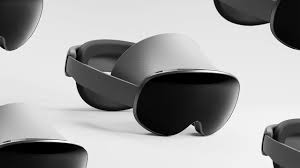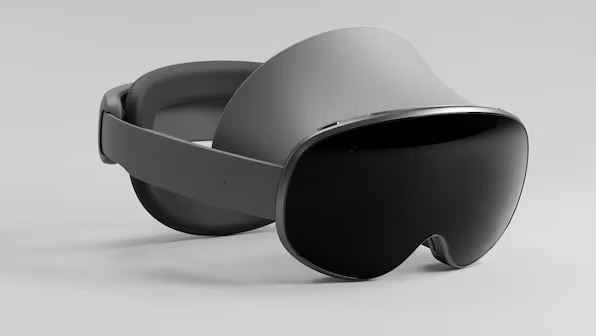Samsung’s collaboration with Google on the ambitious “Project Moohan” is a significant development that highlights the growing synergy between two global tech giants. This partnership focuses on advancing groundbreaking technologies in the realms of extended reality (XR), artificial intelligence (AI), and cloud computing, signaling a new era of innovation. With the fusion of Samsung’s hardware expertise and Google’s prowess in software and ecosystems, Project Moohan has become a focal point for discussions about the future of immersive experiences. This partnership seeks to redefine user interactions with digital devices and push boundaries in industries ranging from entertainment to education. The importance of this collaboration cannot be overstated, as it reflects the intensifying competition in the tech sector and the pursuit of transformative digital experiences.

The origins of Project Moohan stem from the rapid advancements in XR technologies and the increasing demand for devices and platforms capable of providing immersive experiences. Samsung, known for its dominance in consumer electronics, particularly displays and mobile hardware, found a complementary partner in Google, whose Android ecosystem and AI developments lead the global market. Together, they aim to create a robust platform that will cater to a variety of applications, leveraging their strengths to build an ecosystem where innovation thrives. This collaboration also underscores the necessity of partnerships in today’s technological landscape, where complex innovations demand resources and expertise from multiple sectors.
At its core, Project Moohan is about creating an advanced XR platform capable of transforming how people interact with technology. The goal is to integrate XR into everyday life seamlessly, making it accessible for entertainment, professional tasks, education, and even healthcare. For Samsung, this project provides an opportunity to showcase its industry-leading OLED displays, processors, and sensors, which are crucial for creating high-fidelity, immersive experiences. Meanwhile, Google contributes its machine learning algorithms, cloud services, and integration with Android, ensuring that the platform is both scalable and user-friendly.
This partnership also focuses on addressing key challenges in XR technology, such as latency, content availability, and affordability. By pooling their resources, Samsung and Google aim to overcome these barriers, ensuring that Project Moohan is not just a technological marvel but also a practical solution for users worldwide. The project’s emphasis on open collaboration is also noteworthy, as it seeks to involve developers, content creators, and enterprises to build an expansive ecosystem.
The collaboration between Samsung and Google is a natural alignment of strengths. Samsung’s hardware innovations, particularly its advancements in display technologies and chipsets, provide the foundation for Project Moohan’s hardware components. Samsung’s OLED technology, which offers unparalleled clarity and responsiveness, is critical for XR devices, where visual quality significantly impacts user experience. Additionally, Samsung’s experience in manufacturing ensures that the devices will be reliable and scalable for global markets.
On the other hand, Google brings its unparalleled expertise in software development, cloud computing, and artificial intelligence. Google’s Android operating system already powers billions of devices worldwide, making it the ideal platform for integrating XR functionalities. Moreover, Google’s advancements in AI, particularly in areas like natural language processing and computer vision, add a layer of intelligence to the devices, enabling them to adapt to user preferences and environments dynamically.
Together, the two companies are poised to address some of the most pressing challenges in XR development, including creating lightweight, efficient devices, ensuring seamless connectivity, and delivering high-quality content. This synergy is a testament to the power of collaboration in driving technological innovation and ensuring that the resulting products are not only cutting-edge but also practical for everyday use.
The potential applications of Project Moohan span a wide range of industries, reflecting the versatility of XR technologies. In the entertainment sector, the platform promises to revolutionize gaming and virtual reality experiences by offering immersive, high-resolution visuals and responsive interactions. With the integration of Google’s AI, these experiences can become more personalized, adapting to individual user preferences and creating dynamic, engaging content.
In education, Project Moohan could be a game-changer, providing students with immersive learning environments that make complex concepts easier to understand. For instance, students could explore historical events through virtual reenactments or study scientific phenomena in simulated environments, enhancing their learning experience. Similarly, in the healthcare industry, the platform could be used for training medical professionals, performing virtual surgeries, or even providing therapy through immersive environments.
Another significant application lies in remote work and collaboration. With more organizations adopting hybrid work models, Project Moohan could offer tools for virtual meetings, collaborative design, and remote training. By creating realistic virtual environments, the platform has the potential to make remote interactions as effective as in-person meetings, bridging the gap between physical and digital spaces.
While the potential of Project Moohan is immense, several challenges need to be addressed to ensure its success. One of the primary concerns is accessibility, as XR technologies have traditionally been expensive and out of reach for many consumers. To tackle this, Samsung and Google are focusing on creating cost-effective solutions without compromising on quality. By leveraging Samsung’s manufacturing capabilities and Google’s cloud infrastructure, they aim to reduce costs and make the technology accessible to a broader audience.
Another challenge is content availability. For XR platforms to succeed, they need a wide range of high-quality content that caters to diverse user interests. Recognizing this, Project Moohan emphasizes collaboration with developers and content creators, providing them with the tools and resources needed to create compelling experiences. Google’s Play Store, which already hosts millions of apps, is expected to play a pivotal role in distributing content for the platform.
Finally, issues related to privacy and security must be addressed, especially given the sensitive nature of data collected by XR devices. Both companies have committed to implementing robust security measures and ensuring that user data is protected. By prioritizing transparency and accountability, they aim to build trust among users and create a secure platform for immersive experiences.
The impact of Project Moohan extends beyond the immediate applications of XR technology. By fostering collaboration and innovation, the project sets a precedent for how companies can work together to address complex technological challenges. It also highlights the importance of creating open ecosystems that encourage participation from a wide range of stakeholders, including developers, content creators, and consumers.
Moreover, Project Moohan reflects the broader trends shaping the tech industry, such as the convergence of hardware and software and the increasing importance of artificial intelligence. By integrating these elements into a cohesive platform, Samsung and Google are not only advancing XR technology but also setting the stage for future innovations in related fields.
Samsung’s partnership with Google on Project Moohan represents a significant milestone in the development of XR technologies. By combining their strengths in hardware and software, the two companies are creating a platform that has the potential to transform how people interact with technology. From entertainment and education to healthcare and remote work, the applications of Project Moohan are vast and varied, reflecting the versatility of XR technologies.
While challenges remain, the commitment of both companies to addressing issues related to accessibility, content availability, and security ensures that Project Moohan is well-positioned for success. As the project progresses, it will be fascinating to see how it shapes the future of immersive experiences and influences the broader tech industry. For now, one thing is clear: the collaboration between Samsung and Google is a testament to the power of partnership in driving innovation and pushing the boundaries of what technology can achieve.










Add Comment